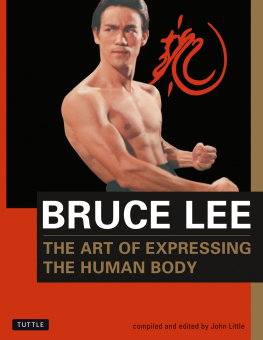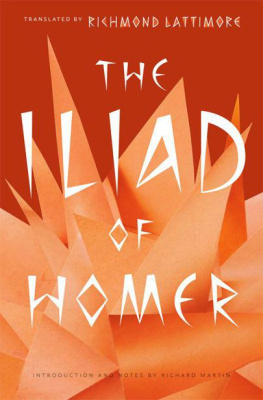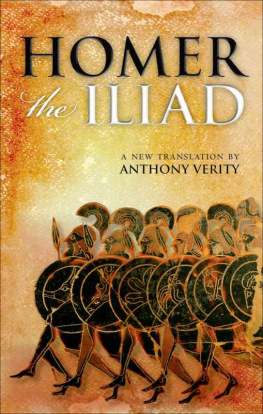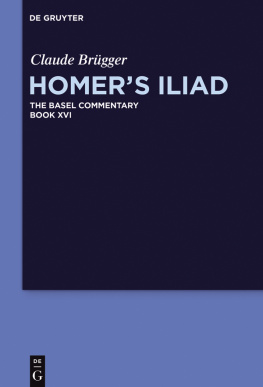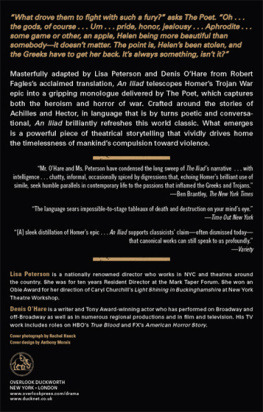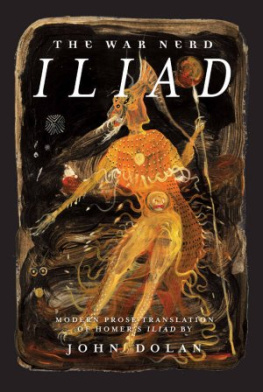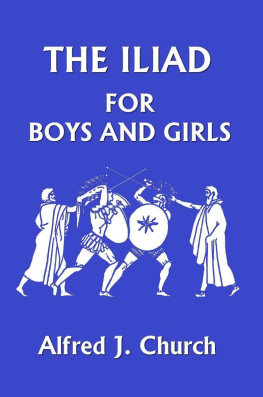Bruce Louden - The Iliad
Here you can read online Bruce Louden - The Iliad full text of the book (entire story) in english for free. Download pdf and epub, get meaning, cover and reviews about this ebook. year: 2006, publisher: Johns Hopkins University Press, genre: Art. Description of the work, (preface) as well as reviews are available. Best literature library LitArk.com created for fans of good reading and offers a wide selection of genres:
Romance novel
Science fiction
Adventure
Detective
Science
History
Home and family
Prose
Art
Politics
Computer
Non-fiction
Religion
Business
Children
Humor
Choose a favorite category and find really read worthwhile books. Enjoy immersion in the world of imagination, feel the emotions of the characters or learn something new for yourself, make an fascinating discovery.

- Book:The Iliad
- Author:
- Publisher:Johns Hopkins University Press
- Genre:
- Year:2006
- Rating:3 / 5
- Favourites:Add to favourites
- Your mark:
- 60
- 1
- 2
- 3
- 4
- 5
The Iliad: summary, description and annotation
We offer to read an annotation, description, summary or preface (depends on what the author of the book "The Iliad" wrote himself). If you haven't found the necessary information about the book — write in the comments, we will try to find it.
The Iliad — read online for free the complete book (whole text) full work
Below is the text of the book, divided by pages. System saving the place of the last page read, allows you to conveniently read the book "The Iliad" online for free, without having to search again every time where you left off. Put a bookmark, and you can go to the page where you finished reading at any time.
Font size:
Interval:
Bookmark:

The Iliad

Structure, Myth, and Meaning
BRUCE LOUDEN
THE JOHNS HOPKINS UNIVERSITY PRESS
Baltimore
2006 The Johns Hopkins University Press
All rights reserved. Published 2006
Printed in the United States of America on acid-free paper
2 4 6 8 9 7 5 3 1
The Johns Hopkins University Press
2715 North Charles Street
Baltimore, Maryland 21218-4363
www.press.jhu.edu
Library of Congress Cataloging-in-Publication Data
Louden, Bruce, 1954
The Iliad: structure, myth, and meaning / Bruce Louden.
p. cm.
Includes bibliographical references and index.
ISBN 0-8018-8280-x (hardcover: alk. paper)
1. Homer. Iliad. 2. Epic poetry, Greek History and criticism. 3. Achilles
(Greek mythology) in literature. 4. Trojan WarLiterature and the war.
5. Rhetoric, Ancient. I. Title.
PA4037L655 2006
884'.01dc22
2005018075
A catalog record for this book is available from the British Library.

CHAPTER ONE
The Principal Narrative Pattern
CHAPTER TWO
The Overture
CHAPTER THREE
The Middle Sequence: Parody of the Narrative Pattern
CHAPTER FOUR
The Introductory Pattern: The Best of the Akhaians Calls an Assembly
CHAPTER FIVE
Subgenres of Myth in the Iliad I
CHAPTER SIX
Subgenres of Myth in the Iliad II
CHAPTER SEVEN
The Iliads Divine Economy, the Goddess Anat, and the Homeric Athena

Sometime after having finished my previous study, The Odyssey: Structure, Narration, and Meaning (Baltimore: Johns Hopkins University Press, 1999), I was in the early stages of a book on Greek myth, when I realized that the techniques I had developed for analyzing the structure of the Odyssey could also be applied to the Iliad. Accordingly, the first four chapters of this book use the same notions and terms, a narrative pattern existing in three sequences (though one need not have read that book to follow the arguments in this study). But the last three chapters grew out of my exposure to Ugaritic myth, which came from reading Considines The Theme of Divine Wrath in Ancient East Mediterranean Literature and M. L. Wests The East Face of Helicon: West Asiatic Elements in Greek Poetry and Myth. From there I worked my way back to the studies of Cyrus Gordon, the dean of American Ugaritic scholars, and important works by Mark Smith and others on the interrelations of Ugaritic myth and the Old Testament.
In 2000, just as I began work on this book, I was fortunate to be a Summer Fellow at the Center for Hellenic Studies in Washington, D.C., where I wrote a draft of the third chapter. I thank the interim director Mary Depew, the incoming director Greg Nagy, and my colleagues there for their stimulating company and conversation. I paid a few visits to the Classics and Graduate libraries at the University of California at Berkeley, and thank those who helped facilitate my stays and my host on those occasions, Rob Dobbin, for his hospitality. Bruce Heiden and Greg Thalmann both read and commented on early drafts of the first two chapters. Robert Alter (who was also patient in fielding my questions about Old Testament narratives) did the same for an early draft of the fifth chapter. I thank these scholars for their help (though ask for their indulgence if I have retained any points with which they still disagree).
I gave earlier versions of parts of chapters 2, 3, 5, and 6 as papers at annual meetings of the Classical Association of the Middle West and South (2000 in Knoxville, Tennessee; 2001 in Provo, Utah; 2002 in Austin, Texas; 2003 in Lexington, Kentucky; and 2005 in Madison, Wisconsin). I thank CAMWS for providing me with these valuable forums for testing my ideas, and the audiences for hearing me out and offering vital feedback. An earlier version of part of the third chapter appeared as an article, Eurybates, Odysseus, and the Duals in Book 9 of the Iliad, in the Colby Quarterly 38 (2002): 6276. I thank the editor, Hanna M. Roisman, for inviting me to be part of that all-Homer volume and for permission to repeat the argument here in revised form. I should also like to thank Allen Gleason for responding to my many Old Testament queries and Brian R. MacDonald for his great help as copy editor. Lastly, I wish to express my gratitude to the staff of the Inter-Library Loan Department of the University of Texas at El Paso, whose diligent efforts allowed me to pursue the unexpected turns my research sometimes took.
All translations of Homeric epic are my own. Translations of other ancient texts are as noted.

The Iliad

Any analysis of structure in the Iliad is, at least in part, a study of repetition, since the epic exists almost entirely as a series of repetitive elements. they largely proved the exception. Valuable studies have been made of type-scenes. Edwards and others, sometimes applying the insights of Arend, established the constituent elements of various type-scenesarrivals, feasts, and the like. Reece uncovered all possible permutations of the Homeric hospitality scene. Fenik traced larger narrative strands, how one type-scene might interlock with another or, in some instances, with whole chains of motifs. The present study, influenced especially by the examples of Lord and Fenik (cf. Lowenstam 1993), pursues the larger interconnected narrative structures in the Iliad, arguing that a lengthy chain, an extended narrative pattern, which is repeated three times, in three sequences, underlies most of its plot.
There have been many previous studies of the Iliads structure, though none has proved completely persuasive (leaving more than enough room for this study). However, these previous studies have established a consensus that the poem has three movements, a conclusion with which I agree. and very different arguments underlying them. Some arguments are based on theories of performance, some on length of the three units, some on the form of the narrative. My analysis is not based on consideration of performance (though clearly performance factors must be responsible for helping to shape the current text), since our notions of performance are too conjectural to offer a sound basis for interpretation. Rather, I have carefully noted the texts larger series of repetitions, exploring how one part of the Iliad corresponds with another.
In determining which books constitute the three parts (17, 817, 1824, which I refer to, respectively, as the initial, middle, and final sequences of the narrative pattern), my analysis confirms both Stanleys and Scheins, though my arguments for so doing are independent, being built on principles different from theirs. Significantly, three separate investigations have now arrived at the same divisions for the three parts. Schein (1997: 349) gives a quick overview of his understanding: Generally speaking, the narrative of the Iliad consists of three parts or stages: Books 17, Books 817... , and Books 1824. These parts may correspond to or reflect units of oral performance/composition; structurally they are more important than the conventional division of the text into twenty-four books.
Next pageFont size:
Interval:
Bookmark:
Similar books «The Iliad»
Look at similar books to The Iliad. We have selected literature similar in name and meaning in the hope of providing readers with more options to find new, interesting, not yet read works.
Discussion, reviews of the book The Iliad and just readers' own opinions. Leave your comments, write what you think about the work, its meaning or the main characters. Specify what exactly you liked and what you didn't like, and why you think so.

